Social Determinants of Health, Diagnosis Accuracy and CPT II Coding Tip Sheet
Social Determinants of Health
Social Determinants of Health (SDOH) are environmental factors that can influence health outcomes. SDOH are conditions where people are born, live and work. These factors can include housing, transportation, discrimination, education, literacy, and access to food.
Screening members for SDOH helps providers understand the complexity of the members they serve. It also helps members improve their relationship and trust with their healthcare team. Additional benefits include the creation of a realistic care plan once the clinician understands the member’s available resources and current stressors.
Diagnosis Accuracy
ICD-10-CM is used to report the diagnosis and mortality data of patients. Diagnosis accuracy is crucial for improving patient care, claims payment, audit outcomes, healthcare financial predictions and data collection.
Coding specificity is coding to the most specific code that the medical record documentation supports. Using diagnoses that are unspecified should be reserved for when clinical information is not known or available.
Common conditions that have overused unspecified codes include:
- Alcohol and drug use, abuse, and dependence
- Anemia
- Anxiety
- Arthritis
- Asthma
- Back pain
- Depression
- Diabetes
- Epilepsy
- Generalized pain
- Hyper/hypotension
- Hyper/hypolipidemia
- Injuries
- Migraines
- Neoplasms
- Pneumonia
- Respiratory failure and infection
- Vitamin D deficiency
CPT Category II Codes
CPT Category II codes are used to measure performance on quality metrics in the Healthcare Effectiveness Data and Information Set (HEDIS) and the Care-Based Incentive (CBI) program. The Alliance uses them to track and fulfill your CBI.
CPT Category II codes always consist of: 
CPT Category II codes were developed by the American Medical Association (AMA) as a supplemental performance tracking set of procedural codes in addition to the Category I and III coding sets. Category II codes are optional and cannot be used to replace Category I codes for billing purposes.
The Alliance highly encourages clinical office and billing staff to use CPT Category II codes for performance measurements to decrease the need for provider data submission, record abstraction and chart review.


